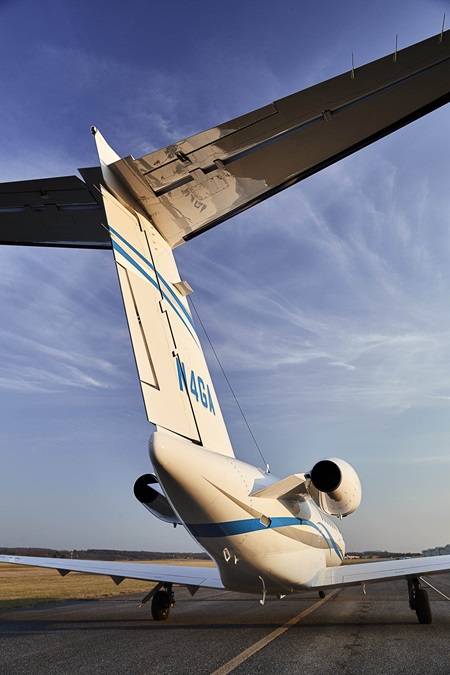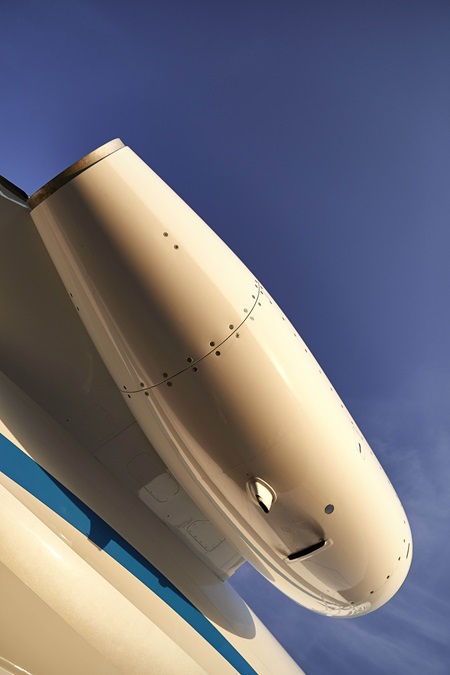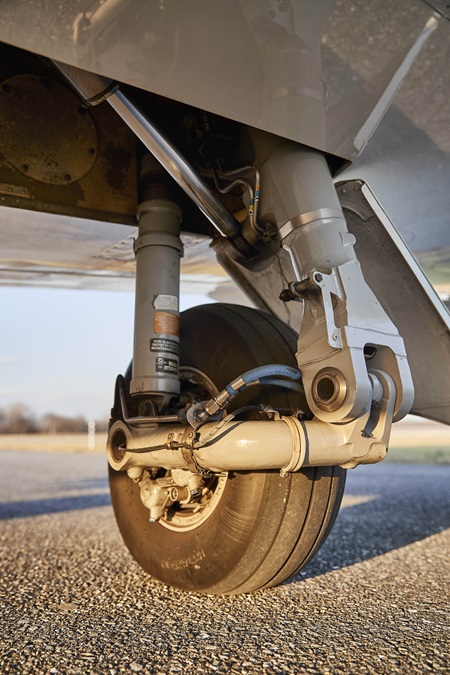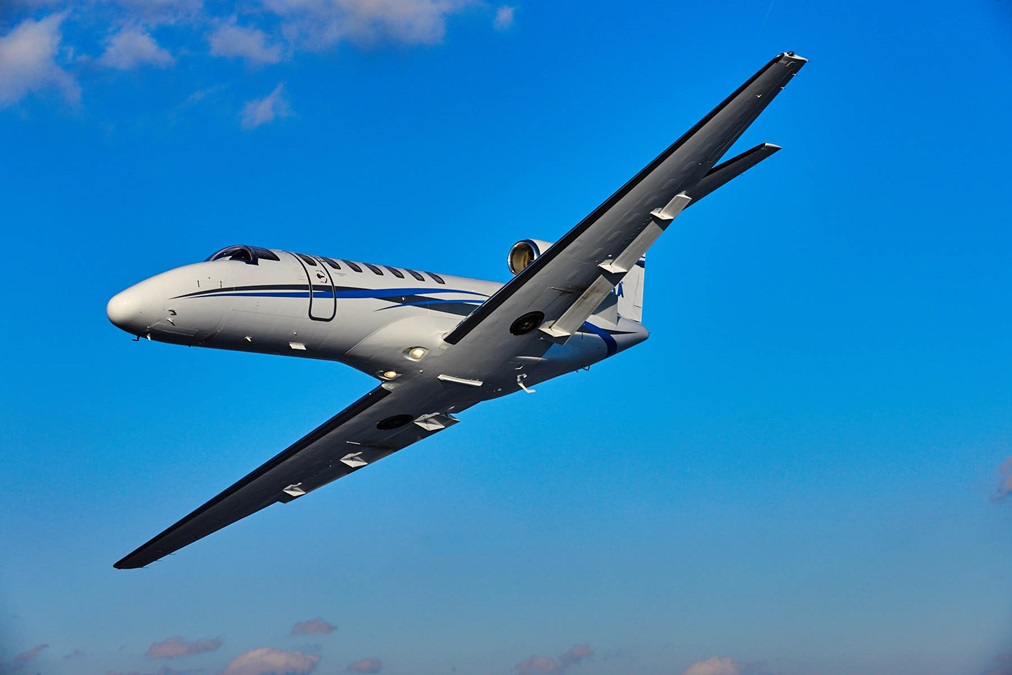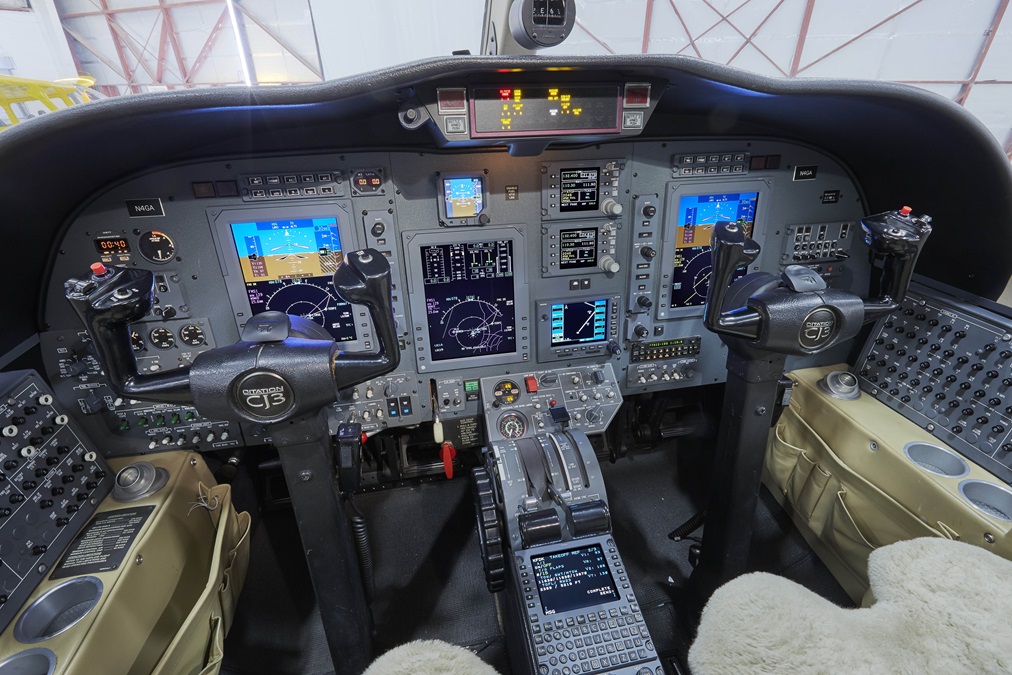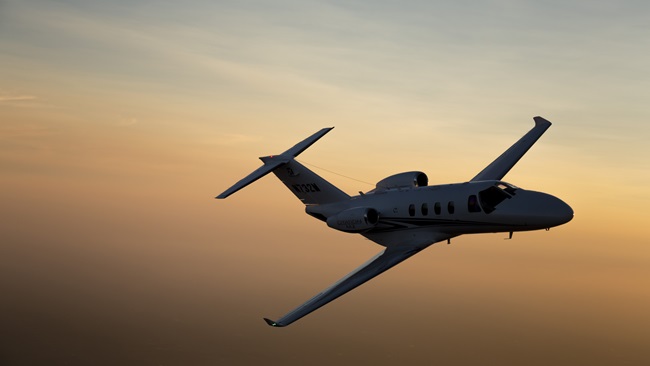Cessna Citation CJ3: Living Legend
The ultimate single-pilot light jet?
By Cyrus Sigari
Russ Meyer Jr., who served as Cessna’s CEO for more than a quarter century and is affectionately known as the father of the Citation line of business jets, will tell you the Citation CJ3 is his favorite. That’s quite a statement considering the stable of incredible flying machines designed under Meyer’s watch. With the combination of single-pilot operation, Mach 0.737 cruise speed, FL450 ceiling, seating for up to 10 occupants, docile handling qualities, simple systems, runway performance requiring less than 3,200 feet, operating costs below $1,500 an hour, and preowned units available in the high $3 million range, it’s hard to beat the value of a preowned CJ3.
Originally certified in 2004, Cessna (now Textron Aviation) built a little more than 400 units of the CJ3 “Classic.” In 2014, Textron Aviation certified the CJ3+, an upgraded CJ3 with a Garmin G3000 integrated flight deck instead of the Collins ProLine 21 cockpit installed in the original CJ3. Outside of the cockpit, the CJ3 and CJ3+ are otherwise identical in performance, interior configuration, systems, and operating cost.
Awesome performance
The first time a pilot gets behind the controls of a CJ3, he or she quickly comments on the machine’s incredible performance. On takeoff, with thrust levers pushed forward to the takeoff detent, the pair of trusty Williams FJ44-3A turbofans quickly achieve the maximum sea-level thrust of 2,820 pounds static thrust per engine, immediately accelerating the jet and its passengers to its nominal V1 speed of 102 knots, a rotation speed of 105 knots, and a V2 speed of 114 knots (sea level, dry runway, ISA, zero wind, flaps 15 degrees). Short-field takeoff performance is one of the highlights of the CJ3, with a balanced field length of 3,180 feet for a standard day at a maximum gross takeoff weight of 13,870 pounds.
With a healthy payload, there’s plenty of margin to pack the airplane up and go the CJ3’s maximum range of 1,800-plus nautical miles at high-speed cruise ,or 2,100 nm at long-range cruise. In fact, CJ3s flying eastbound from Asia have made it safely nonstop from Hawaii to California (2,100 nm).
The advertised maximum speed on the CJ3 is 416 KTAS and the maximum operating Mach number (MMO) is Mach 0.737. These are the advertised numbers; however, Cessna built its reputation by under-promising and over-delivering when it came to aircraft performance. Having personally owned and flown several CJ3s, I have, on multiple occasions, seen speeds in excess of 430 KTAS in the mid-30,000-foot ranges. Once at the maximum cruise altitude of FL450, it rarely takes more than a few minutes until the CJ3 accelerates from climb speed to its maximum Mach number.
Ask any CJ3 operator about cruise performance and he’ll happily tell you that he has to pull power back at cruise; otherwise the speedy little jet will exceed redline and the welcoming sound of the overspeed warning will fill the cockpit. As it only takes 27 minutes to climb to FL450, CJ3 operators will typically opt to climb all the way up to FL450 and take advantage of the smooth air, reduced traffic, quieter cabin, and lower fuel burns at that altitude. At FL450, the CJ3 fuel burn is typically 740 pounds per hour for both engines, or around 110 gallons per hour. Descend to FL290 and the CJ3 is a bit thirstier, with a total fuel burn of nearly double, at 1,500 pph or 220 gph. On average, the CJ3 will burn about 170 gallons of Jet A on a one-hour flight and about 120 gallons in the second hour of a two-hour flight.
On landing, the CJ3’s handling characteristics are as benign as they get. With the combination of the CJ3’s long trailing-link landing gear, high-aspect-ratio wing, ground spoilers, and massive brakes and tires, the airplane has a typical VREF approach speed of approximately 100 KTAS and maximum landing distance of 3,150 feet (ISA, sea level, and with a mid-weight landing weight). Anecdotally, with lighter weights, on several occasions I have been successful in stopping the CJ3 in less than 1,000 feet of total ground roll—very cool.
Safety and training
Knock on wood, the CJ3 has had an incredible safety record. To date, there have been no fatal accidents. A handful of nonfatal accidents were mostly attributed to pilot error on landing. The CJ3’s incredible safety record can be squarely attributed to great design and great training.
Market conditions
At present, the preowned CJ3 market is hot, with only 6.8 percent of the in-service fleet available for sale—representing 28 total units. Pricing for preowned CJ3s ranges from the high-$3-million range for an older-vintage, higher-time aircraft, to the low-$5-million range for a low-time, younger airframe. Pricing assumes higher-time aircraft are enrolled in either Williams TAP Elite or TAP Blue engine maintenance programs.
From 2004 to 2014, there were very few changes to the CJ3. The primary changeover point was in 2009, when Cessna introduced Rockwell Collins IFIS 6.0 (a file server that sends electronic charts and other aircraft information to the multifunction display) and DBU-5000 (which allows database updates via USB drives); LED lighting; and TCAS II, dual Mode S transponders, high-gloss wood veneer, and Encore-style airstair entry door. All of this, which had been optional before 2009, became standard equipment. The good news is that pre-2009 aircraft can be retrofitted with the post-2009 upgrades, albeit for a healthy price tag.
Latest upgrades
Two major upgrades have recently become available for the CJ3 that significantly boost performance and market value: the Tamarack Aerospace Group’s ATLAS active winglets, and the Rockwell Collins Pro Line Fusion cockpit upgrade. The revolutionary new winglet design was recently certified on the CJ3’s little brothers, the Citation CJ, CJ1, and CJ1+, and is expected to be certified for the CJ3 within 12 months of the time this article is published. The Tamarack winglets have significant benefits including increased range, reduced time to climb, increased cruise speed, reduced fuel burn, increased maximum zero fuel weight, improved hot/high performance, and reduced wing stress. While performance numbers are still being finalized for the CJ3, range increases of 15 percent or more are expected with the installation of the winglets. Expected cost of the system is approximately $329,000, fully installed.
Rockwell Collins’ Collins Pro Line Fusion system upgrade provides many next generation features such as synthetic vision; touchscreen control; large, high-resolution topographical maps; ADS-B Out compliance; and much more. The Fusion upgrade gives the CJ3 comparable cockpit performance to the current-production CJ3+ with its Garmin G3000 cockpit. Price, including installation, is expected to be $335,000 with a five-week down time.
Summary
As a current owner of a 2004 CJ3, I can attest that it’s hard to beat the value it delivers. It’s fast, fun to fly, relatively economical to operate, safe, and an incredibly well-designed machine. Many thanks to Russ Meyer Jr. and his team for building and certifying a legendary airplane.
Cyrus Sigari is CEO of jetAVIVA. He’s an aerospace engineer and instructor pilot type rated in the CE-525, CE-510, Phenom 100, Phenom 300, Eclipse 500, and Boeing 747.

